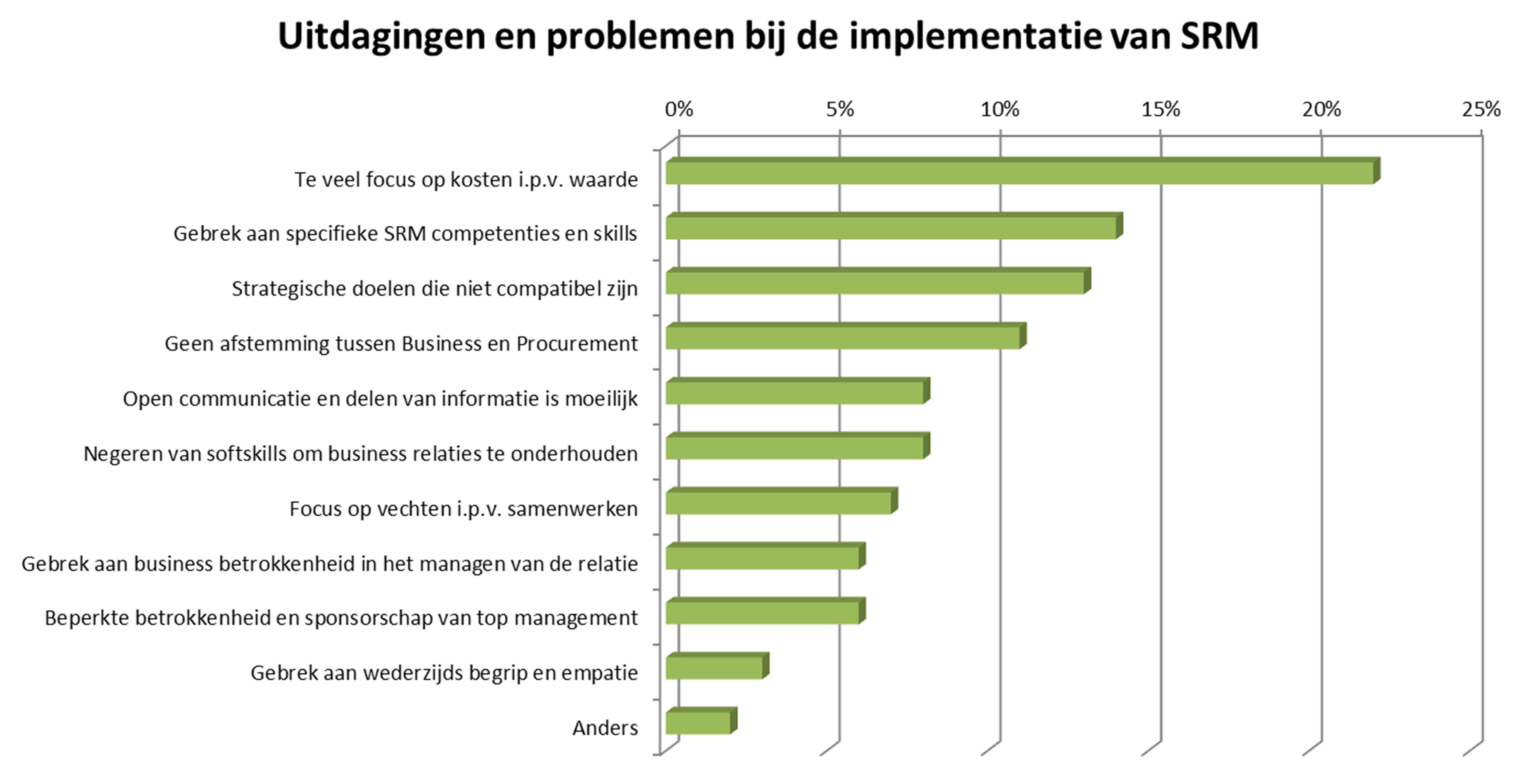Proper implementation of contract management is very complex. You have to take a lot of dimensions into account, including promotion, process-based work, influencing, representing interests, resistance, culture, systems, etc. Often, insufficient attention is paid to the pitfalls of contract management implementation. Too many projects get stranded due to insufficient support or a hastily considered approach. How does one achieve successful implementation?
There are a number of known pitfalls. Things that others ran into in practice and from which you can learn. The image below illustrates that the challenges usually lie in the ‘soft’ side. This is where the implementation of contract management and Supplier Relationship Management often goes wrong:

Proper implementation of course starts with describing the contract management process and policy. How do we want to carry out contract management within our organisation? What kind of contracts do we want to conclude with our suppliers, where do we position contract management and who is responsible for this? An important step which was already discussed in the blog article ‘Setting up contract management in 6 steps’. The CATS CM method offers good tools for this. But the following step, the implementation process, is just as important for successful contract management. To what can one pay explicit attention?
Five factors that determine the success of CM implementation
- Realise that a contract management implementation is a process of change.
Implementing contract management involves introducing a new work method within the organisation. And… change incites resistance. An incorrect focus puts you in a tough spot as a proponent of implementing contract management. People are inclined to focus on what they have to lose instead of what they have to gain from the change. This means that you have to approach it as a change management project in order to have the implementation succeed.
- Create the right climate for the change.
The keywords here are urgency, coalition and vision.
- Without a sense of urgency, the project won’t get off the ground. Make the importance of these steps very clear and in this way rally support for your plans across the spectrum.
- Create a coalition of ‘early adopters’ who become the ambassadors of the Contract Management. People with an interest who have the right influence on other people within the organisation so they can help you convince others.
- Provide a vision. Ultimately, contract management is not the goal but a means of achieving something. What is contract management going to bring to your organisation? Derive the strategy from this.
- Make sure you get the people in the organisation on board.
This is about good communication: removing obstacles and displaying short-term achievements.
- Communication: spread the word, announce the vision! All stakeholders have to know what you’re going to do. Seize every opportunity to announce the vision.
- Remove obstacles that are in the way of the changes. Also stimulate risky and non-traditional ideas and activities.
- Make sure you can quickly show some achievements. Reward the people who made this possible. Celebrate the achieved results and make them clearly visible.
- Implement the change and persevere!
Provide a supporting structure for the new way of working and build on the momentum you’ve created. Use the accumulated credibility to elicit more change. Keep demonstrating that the new way is better than the old way.
- Ensure proper collaboration with other contract parties.
Successfully deploying contract management in your own organisation is not the final stop. The partnerships with other contract parties are also crucial for good results. How do you achieve this added value of a good partnership?
- Start with yourself and your own organisation. Trust breeds trust. Everyone thinks about changing the world, but what about changing yourself? Do this consistently and take other stakeholders in your organisation along in this.
- Provide good KPIs which are mutually acceptable in consultation with a contract party. However, don’t use them to ‘hold them accountable’ but to enter into a dialogue about how to further improve things. This maintains the trust between both parties and allows you to both benefit from new ideas. Also think about PSIs (Partnership Satisfaction Indicators)!
Are you in the middle of an implementation process or on the eve of one? I hope these success factors will help you on your way. Do you have any questions? Feel free to ask me!


